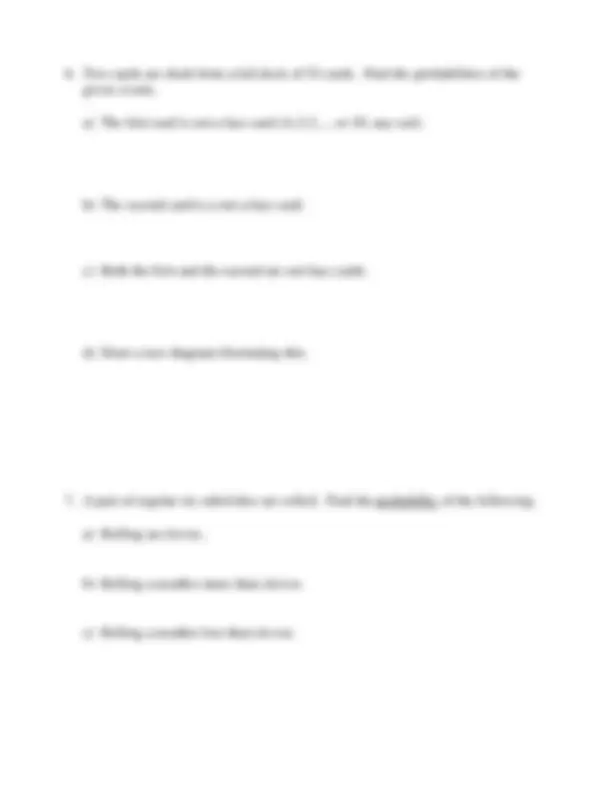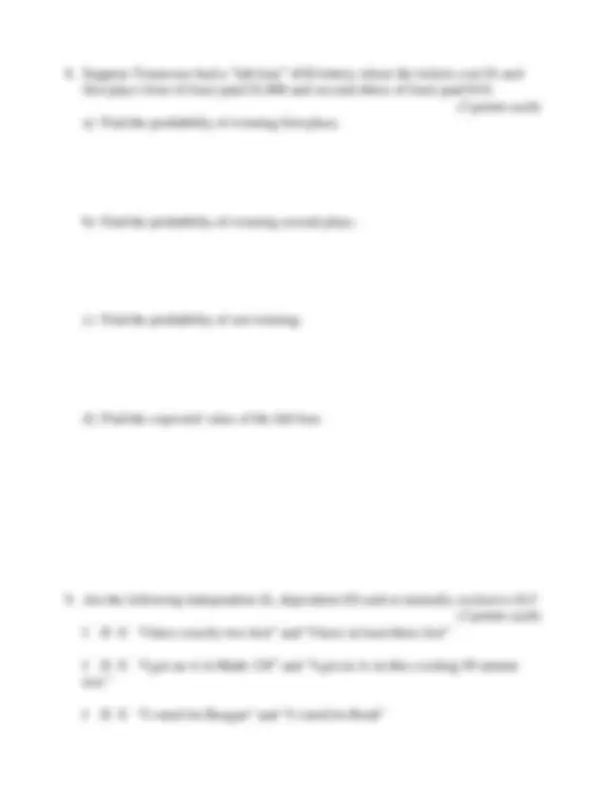




Study with the several resources on Docsity

Earn points by helping other students or get them with a premium plan


Prepare for your exams
Study with the several resources on Docsity

Earn points to download
Earn points by helping other students or get them with a premium plan
Community
Ask the community for help and clear up your study doubts
Discover the best universities in your country according to Docsity users
Free resources
Download our free guides on studying techniques, anxiety management strategies, and thesis advice from Docsity tutors
Material Type: Exam; Class: The Nature of Math; Subject: Mathematics; University: The University of Tennessee-Martin; Term: Spring 2001;
Typology: Exams
1 / 4

This page cannot be seen from the preview
Don't miss anything!



Third Test (6 points)
This exciting fifty minute, four page test covers chapter three of Mathematics: A Practical Odyssey by Johnson and Mowry. Show your work and clearly indicate your answers. All parts of problems are four points unless otherwise indicated.
a) Having two girls
b) Having two boys
c) Which is more likely, two children of the same sex or children of different sexes?
a) red b) green
c) red or yellow d) not black
Now find the odds of each of the following
e) red f) yellow or red
c) yellow d) not black
a) A student took college algebra
b) A student was pleased with their teachers
c) A student who took college algebra was happy with their teachers
d) A student who was happy with their teachers took college algebra
b) Find the probability of winning second place.
c) Find the probability of not winning.
d) Find the expected value of the fab four.
I D E “I got an A in Math 130” and “I got an A on this exciting 50 minute test.”
I D E “I voted for Reagan” and “I voted for Bush”